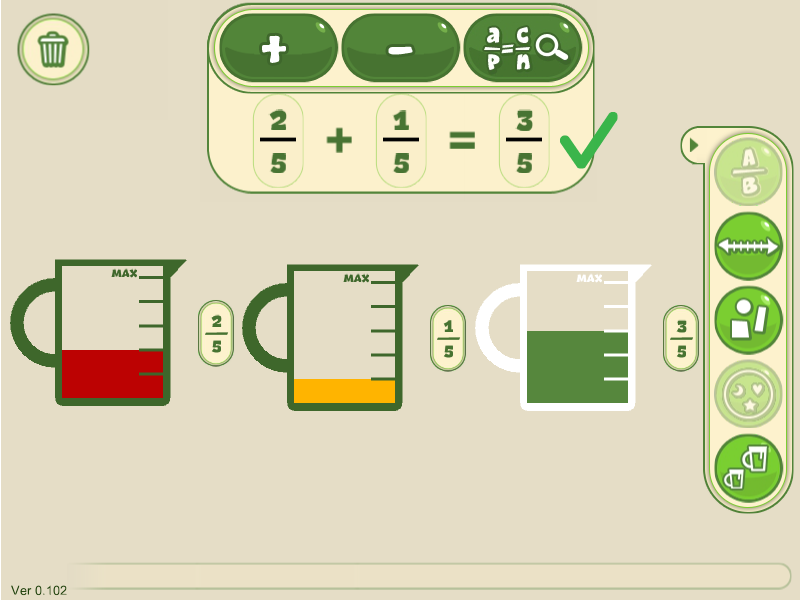The Institute of Education (IOE) have been working with Mathematics Specialist Teachers (MaST) from the Midlands and the Northwest of England to share and test the latest version of Fractions Lab.
In our two latest workshops, kindly facilitated by Edge Hill University during their March MaST days, we were interested in how Fractions Lab may change the way that teachers think about teaching fractions.
We worked with a total of 18 teachers in one-hour workshops. Even after this short period of familiarisation with Fractions Lab, we were impressed with the feedback.
Stats at a glance:
| 100% | The teachers who were at least ‘quite likely’ to use Fractions Lab in their own teaching. |
| 94% | The teachers who would recommend Fractions Lab to colleagues. |
| 88% | The teachers who felt that Fractions Lab challenged their own thinking about fractions to at least some extent. |
| 83% | The teachers who felt that Fractions Lab challenged the way they taught fractions. |
Feedback from teachers:
The teachers were very complimentary about Fractions Lab. Here are a few of their written comments:
‘I’m very likely to use Fractions Lab in my own teaching and very likely to recommend it to my colleagues. It is ideal for starters, guided groups or independent activity.’
Fred Langston, Meir Heath Primary.
‘Fractions Lab challenged the way I teach fractions because of its ability to break up [the representations] into different equal parts, demonstrate adding etc. I usually do lots of drawing but this shows it more clearly.’
Sharon Thornhill, Trinity School.
‘I liked the fact that you could show a 1/2 in different ways e.g. jug, number line etc. It is suitable for all year groups.’
Annette Draper, St James’ Catholic Primary School.
‘I like the link between concrete and abstract.’
Sue Hodson, Highfield St Matthews.
‘It made me think about how children learn.’
Debbie Speight, Northwood Community Primary School.
‘It gives ways to use the NCETM method for teaching addition of fractions in a very visual way! Good visual representations of the fractions. I like the partitioning aspect so you can change the fractions to share the same denominator.’
Andrew Hields, St Annes CE Primary.
Fractions representations: A focus on liquid measures
Fractions Lab offers a range of visual representations: number lines, area (e.g. rectangles), sets and liquid measures. We are particularly interested in how liquid measures might be used to teach fractions because there is little research about the use of liquid measures to teach and learn fractions in primary schools. After the workshop, nearly half (46%) of the teachers stated that they would use liquid measures in their fraction teaching more. None of the teachers felt that they needed to use symbols more often, but some felt they would also use area (12%), sets (12%) and number lines (15%) more.
One teacher, reflecting on their own fractions teaching with Year 6 commented:
‘It’s nice that there’s different representations like the capacity jug and number line. A lot of even the older children don’t actually understand the value of a fraction and its place on a number line or can relate say 6/10ths of a litre. They just don’t get that because they are too embedded with the numbers at that stage and it has gone away from the concrete manipulatives. It does that on the screen in a nice way.’

An example of liquid measures being used in Fractions Lab
Another teacher also stated, ‘I like the measures, I don’t think I’ve used liquid measures with children before. It is a different way of exploring fractions with them.’
We are holding more workshops for teachers. If you are interested in attending or hosting a workshop, please contact us.


